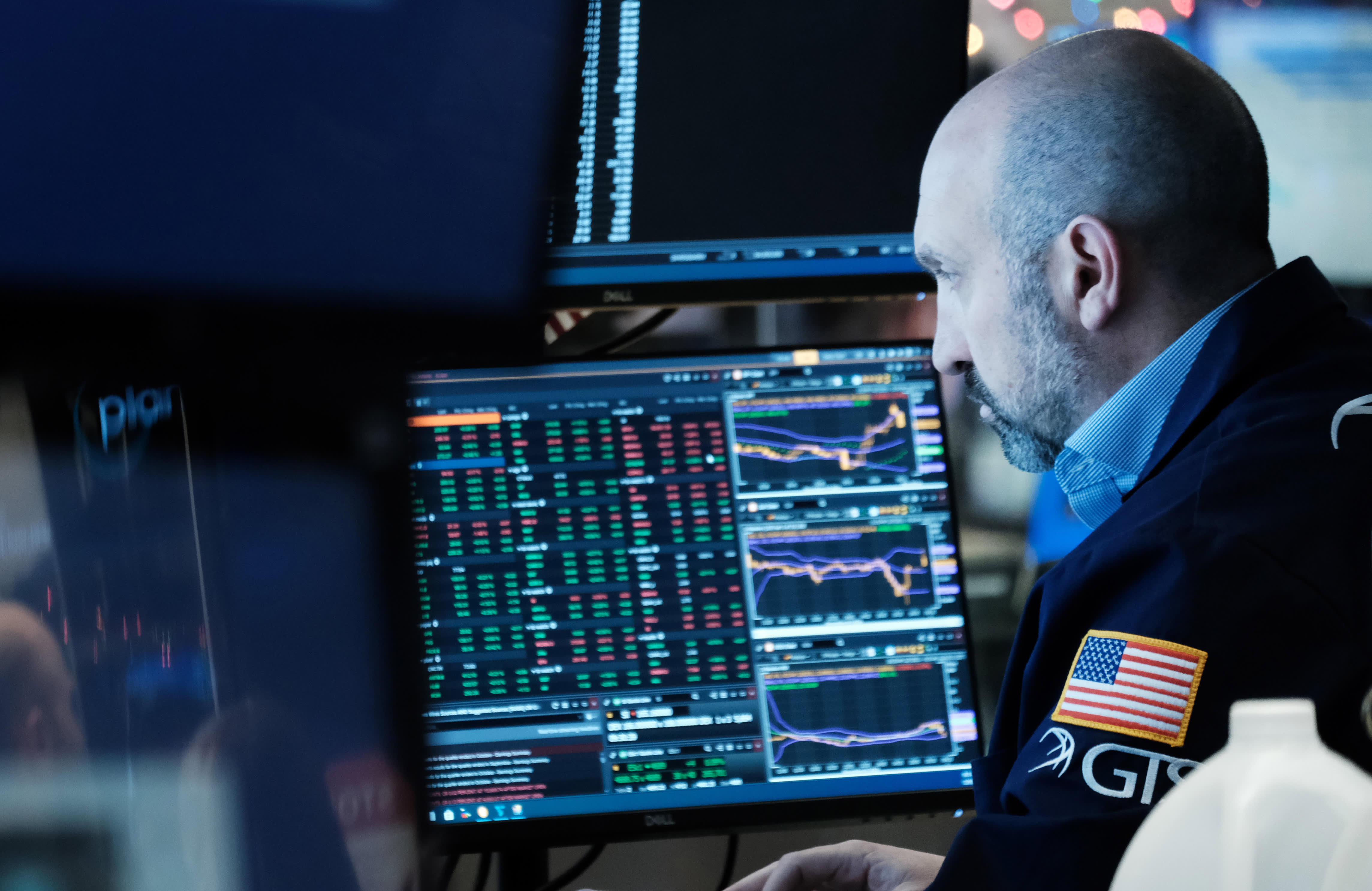
Traders work on the floor of the New York Stock Exchange (NYSE) on December 08, 2021 in New York City.
Spencer Platt | Getty Images
Has the risk of a full-blown bear market risen on Wall Street?
A standard-issue correction has already arrived for the Nasdaq Composite. However, the larger question is whether tighter central bank policies in the Western world will lead to deeper declines than we have already seen in major averages and among individual stocks.
Many years ago, legendary investor Stanley Druckenmiller told me that his historical analysis suggested that there are two triggers for meaningful bear markets in stocks: rising interest rates and the onset of war.
Now, we seem to be staring down the barrel of both as the Federal Reserve has now acknowledged that it plans rate hikes throughout this year and a reduction in its holdings of Treasury bonds. Meanwhile, saber-rattling is taking place from the Kremlin to Kyiv and from Tiananmen to Taiwan.
The Fed’s balance sheet reduction, known as “quantitative tightening,” would be a powerful addition to rate hikes in reducing surplus liquidity in markets. If history is any guide, it would also further weaken equity markets over the course of the tightening cycle.
Just the threat of these events, prior to the Fed’s admissions, knocked markets for a loop, wringing out speculative excesses in cryptocurrencies, meme stocks and SPACs, or special purpose acquisition companies.
AMC Entertainment and GameStop shares are each down about 80% from their memetic highs. Shares of Robinhood and Coinbase have been robbed.
Weak assets fall first before being followed by the market’s less-risky bets.
The NYSE Advance/Decline Line is rolling over while the number of new 52-week lows has exploded.
True, some sentiment indicators like the VIX (or fear indicator) recently reached extremes, suggesting an oversold rally would ensue. Yet I don’t believe this tumult is nearly over in the intermediate to longer term.
A time of heightened risk around the world
Geopolitical risks are rising rapidly. The U.S. has put troops on alert, and NATO has placed forces on standby and reinforced positions in Eastern Europe as the threat of a Russian invasion of Ukraine continues to rise. NATO allies are also reportedly sending weapons to Ukraine to shore up its defenses.
Russia was pessimistic on Washington’s response to its demands that Ukraine never enter NATO.
Earlier this week, the U.S. State Department told family members of diplomats and embassy staff to leave Ukraine, a sign of growing concern that Russian President Vladimir Putin is not bluffing. This is a belief buttressed by the 100,000 Russian troops, weaponry and logistical support amassed on Ukraine’s border and reports that Putin is attempting to install a pro-Russian president in Kyiv.
Also, it’s interesting to note that Russian stocks, which performed well last year in lockstep with oil prices, have tumbled in 2022.
Against a backdrop of rising oil prices and a flight to quality into U.S. Treasury bonds, the combined messages from those markets appear menacing.
Add to those concerns renewed Chinese flyovers in Taiwan, which prompted the Taiwanese Air Force to scramble and chase 39 fighter planes away over the past weekend.
If there is even an economic war between the West and Russia resulting in stiff sanctions, like cutting off Russian energy exports, blocking Russia from using SWIFT — a mechanism for international financial transfers — or placing export controls on goods heading to Russia, the global economic stakes rise dramatically.
The stakes are even higher if Putin and China’s President Xi Jinping are coordinating their efforts to destabilize Western alliances and fracture already-frayed relations.
Such a set of developments could freeze central banks in place and result in a friendlier Fed.
That would be relatively better for risk assets, but far from a friendly overall environment, especially given a three-year bull run, lofty valuations and speculative excesses in some corners of global markets.
The pandemic-induced bear market in 2020 lasted 21 trading days as the S&P 500 tumbled 34% in the most compressed bear phase on record.
I’m considerably less optimistic that the next bear market, if this is indeed the start of one, will be over so quickly, or do so little damage.
Cash may no longer be trash in 2022.
— Ron Insana is a CNBC contributor and a senior advisor at Schroders.




